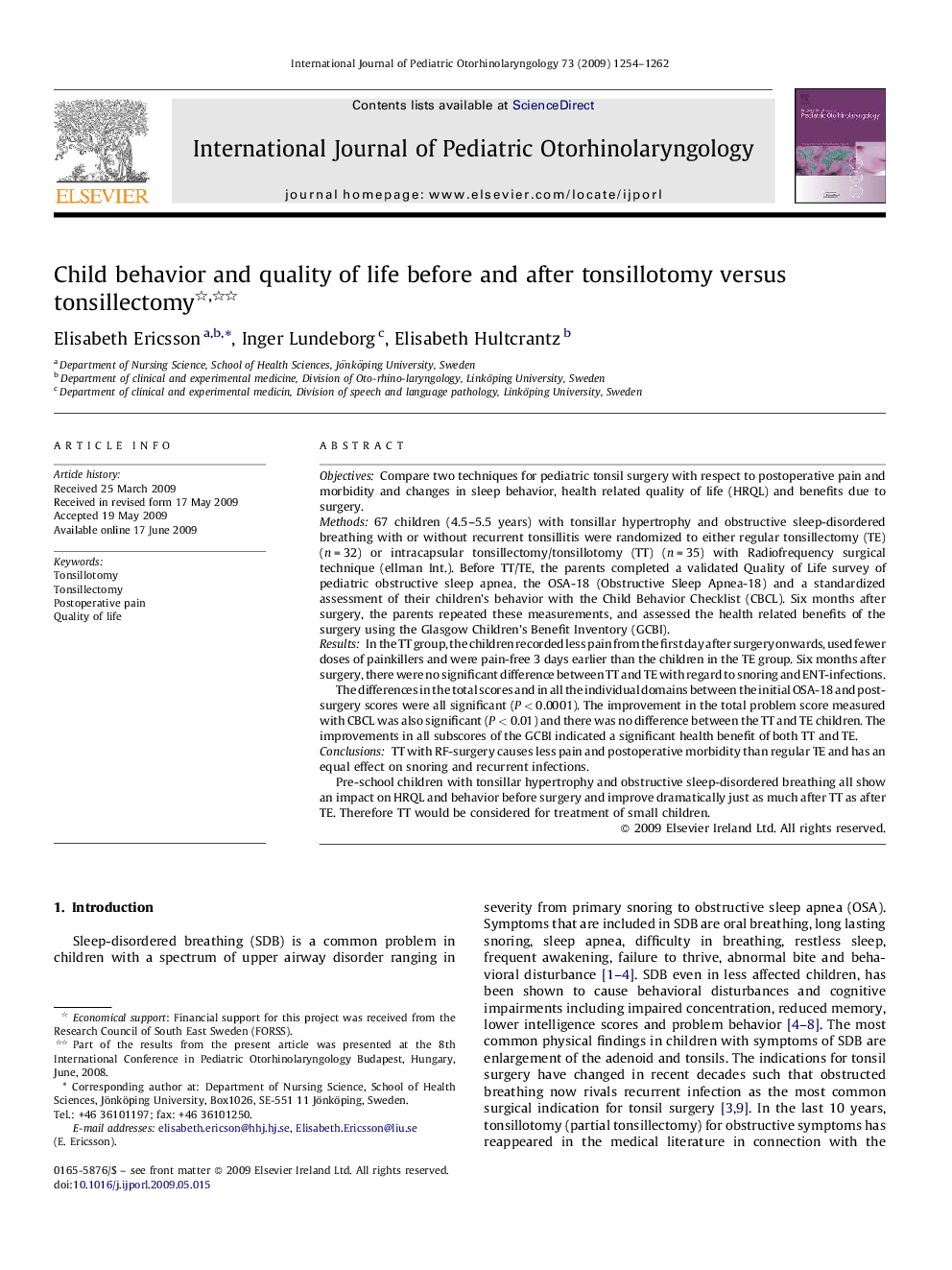| Article ID | Journal | Published Year | Pages | File Type |
|---|---|---|---|---|
| 4114421 | International Journal of Pediatric Otorhinolaryngology | 2009 | 9 Pages |
ObjectivesCompare two techniques for pediatric tonsil surgery with respect to postoperative pain and morbidity and changes in sleep behavior, health related quality of life (HRQL) and benefits due to surgery.Methods67 children (4.5–5.5 years) with tonsillar hypertrophy and obstructive sleep-disordered breathing with or without recurrent tonsillitis were randomized to either regular tonsillectomy (TE) (n = 32) or intracapsular tonsillectomy/tonsillotomy (TT) (n = 35) with Radiofrequency surgical technique (ellman Int.). Before TT/TE, the parents completed a validated Quality of Life survey of pediatric obstructive sleep apnea, the OSA-18 (Obstructive Sleep Apnea-18) and a standardized assessment of their children's behavior with the Child Behavior Checklist (CBCL). Six months after surgery, the parents repeated these measurements, and assessed the health related benefits of the surgery using the Glasgow Children's Benefit Inventory (GCBI).ResultsIn the TT group, the children recorded less pain from the first day after surgery onwards, used fewer doses of painkillers and were pain-free 3 days earlier than the children in the TE group. Six months after surgery, there were no significant difference between TT and TE with regard to snoring and ENT-infections.The differences in the total scores and in all the individual domains between the initial OSA-18 and post-surgery scores were all significant (P < 0.0001). The improvement in the total problem score measured with CBCL was also significant (P < 0.01) and there was no difference between the TT and TE children. The improvements in all subscores of the GCBI indicated a significant health benefit of both TT and TE.ConclusionsTT with RF-surgery causes less pain and postoperative morbidity than regular TE and has an equal effect on snoring and recurrent infections.Pre-school children with tonsillar hypertrophy and obstructive sleep-disordered breathing all show an impact on HRQL and behavior before surgery and improve dramatically just as much after TT as after TE. Therefore TT would be considered for treatment of small children.
